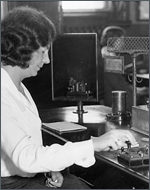

|
NATO Phonetic Alphabet & Morse Code
Saturday, February 28, 2009 | Codes
The NATO phonetic alphabet, more formally the international radiotelephony spelling alphabet, is the most widely used spelling alphabet. Though often called 'phonetic alphabets', spelling alphabets have no connection to phonetic transcription systems like the International Phonetic Alphabet. Instead, the NATO alphabet assigns code words to the letters of the English alphabet acrophonically (Alfa for A, Bravo for B, etc.) so that critical combinations of letters (and numbers) can be pronounced and understood by those who transmit and receive voice messages by radio or telephone regardless of their native language, especially when the safety of navigation or persons is essential. The paramount reason is to ensure intelligibility of voice signals over radio links.
Morse code is a type of character encoding that transmits telegraphic information using rhythm. Morse code uses a standardized sequence of short and long elements to represent the letters, numerals, punctuation and special characters of a given message. The short and long elements can be formed by sounds, marks, or pulses, in on off keying and are commonly known as 'dots' and 'dashes' or 'dits' and 'dahs'. The speed of Morse code is measured in words per minute (WPM) or characters per minute, while fixed-length data forms of telecommunication transmission are usually measured in baud or bps.
FAA radiotelephony phonetic alphabet and Morse code chart:


|


|

